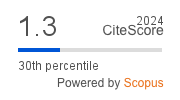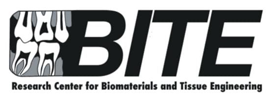Planning for success: Full mouth rehabilitation with different fixed restorations
Downloads
Background: A minimally invasive approach in a full mouth rehabilitation is preferred, especially in a younger patient, as it is reversible, in line with the European Consensus Statement. Purpose: This case report aims to highlight the importance of detailed planning of a full mouth rehabilitation involving different fixed restorations, including direct composite restoration, indirect posterior onlays, and the replacement of an unrestorable tooth with a dental implant. Case: A 52-year-old gentleman presented with severe generalized non-carious tooth surface loss (NCTSL), planned for full mouth rehabilitation in a reorganized approach. His treatment was complicated by subgingival restorative margins and an unrestorable tooth, requiring replacement. Case management: Periodontal disease was stabilized, and the full mouth rehabilitation was initiated with direct composite restoration of the anterior teeth using the injection molding technique (IMT), followed by the implant placement protocol and extraction of unrestorable tooth 24. The final implant abutment and restoration were digitally designed and delivered with high accuracy. Conclusion: Full mouth rehabilitation requires detailed planning and can be complicated by the replacement of missing teeth with dental implants. However, digital technology and good communication with the dental technologist can help to deliver the prosthodontically driven implant restoration with good accuracy.
Downloads
Dipalma G, Inchingolo F, Patano A, Guglielmo M, Palumbo I, Campanelli M, Inchingolo AD, Malcangi G, Palermo A, Tartaglia FC, Minetti E, Inchingolo AM. Dental erosion and the role of saliva: a systematic review. Eur Rev Med Pharmacol Sci. 2023; 27(21): 10651–60. doi: https://doi.org/10.26355/eurrev_202311_34345
Sitalaksmi RM, Juanda DN, Noor TNE binti TA. Management of edentulous patient with extensively resorbed alveolar bone using suction-effective denture: a case report. J Int Dent Med Res. 2023; 16(1): 294–8. web: http://www.jidmr.com/journal/wp-content/uploads/2023/03/48-D22_2071_AlexanderPN_Ratri_Maya_Sitalaksmi_Indonesia.pdf
Ramadhan DL, Setyabudi, Wahjuningrum DA, Fepiosandi RA, Wardhani MD, Askandar MG, Pawar AM, Fahreza RR. Comprehensive rehabilitation using different restorative materials with maxillary precision attachment, mandibular magnet and implant-supported overdenture: a case report. J Int Dent Med Res. 2024; 17(4): 1740–6. web: http://www.jidmr.com/journal/wp-content/uploads/2024/12/51-Case-D24_3284_Dian_A_W_Setyabudi_Indonesia.pdf
Nugroho DA, Widjijono W, Nuryono N, Asmara W, Aastuti WD, Ardianata D. Effects of filler volume of nanosisal in compressive strength of composite resin. Dent J (Majalah Kedokt Gigi). 2017; 50(4): 183. doi: https://doi.org/10.20473/j.djmkg.v50.i4.p183-187
Loomans B, Opdam N, Attin T, Bartlett D, Edelhoff D, Frankenberger R, Benic G, Ramseyer S, Wetselaar P, Sterenborg B, Hickel R, Pallesen U, Mehta S, Banerji S, Lussi A, Wilson N. Severe tooth wear: European consensus statement on management guidelines. J Adhes Dent. 2017; 19(2): 111–9. doi: https://doi.org/10.3290/j.jad.a38102
Mesko ME, Sarkis-Onofre R, Cenci MS, Opdam NJ, Loomans B, Pereira-Cenci T. Rehabilitation of severely worn teeth: A systematic review. J Dent. 2016; 48: 9–15. doi: https://doi.org/10.1016/j.jdent.2016.03.003
Tatakis DN, Silva CO. Contemporary treatment techniques for excessive gingival display caused by altered passive eruption or lip hypermobility. J Dent. 2023; 138: 104711. doi: https://doi.org/10.1016/j.jdent.2023.104711
Abduo J, Lyons K. Clinical considerations for increasing occlusal vertical dimension: a review. Aust Dent J. 2012; 57(1): 2–10. doi: https://doi.org/10.1111/j.1834-7819.2011.01640.x
Abduo J, Sambrook RJ. Longevity of ceramic onlays: A systematic review. J Esthet Restor Dent. 2018; 30(3): 193–215. doi: https://doi.org/10.1111/jerd.12384
Dawood A, Patel S. The dental practicality index - assessing the restorability of teeth. Br Dent J. 2017; 222(10): 755–8. doi: https://doi.org/10.1038/sj.bdj.2017.447
Gallucci GO, Hamilton A, Zhou W, Buser D, Chen S. Implant placement and loading protocols in partially edentulous patients: A systematic review. Clin Oral Implants Res. 2018; 29 Suppl 1: 106–34. doi: https://doi.org/10.1111/clr.13276
Dietrich T, Ower P, Tank M, West NX, Walter C, Needleman I, Hughes FJ, Wadia R, Milward MR, Hodge PJ, Chapple ILC, British Society of Periodontology. Periodontal diagnosis in the context of the 2017 classification system of periodontal diseases and conditions - implementation in clinical practice. Br Dent J. 2019; 226(1): 16–22. doi: https://doi.org/10.1038/sj.bdj.2019.3
Ahmed KE, Murbay S. Survival rates of anterior composites in managing tooth wear: systematic review. J Oral Rehabil. 2016; 43(2): 145–53. doi: https://doi.org/10.1111/joor.12360
Varadan P, Balaji L, Manaswini DY, Rajan RM. Reinforced immediate dentin sealing vs conventional immediate dentin sealing on adhesive behavior of indirect restorations: a systematic review. J Contemp Dent Pract. 2023; 23(10): 1066–75. doi: https://doi.org/10.5005/jp-journals-10024-3415
Mugri MH, Sayed ME, Nedumgottil BM, Bhandi S, Raj AT, Testarelli L, Khurshid Z, Jain S, Patil S. Treatment prognosis of restored teeth with crown lengthening vs. deep margin elevation: a systematic review. Mater (Basel, Switzerland). 2021; 14(21): 6733. doi: https://doi.org/10.3390/ma14216733
Magne P. M-i-M for DME: matrix-in-a-matrix technique for deep margin elevation. J Prosthet Dent. 2023; 130(4): 434–8. doi: https://doi.org/10.1016/j.prosdent.2021.11.021
Tolstunov L, Hamrick JFE, Broumand V, Shilo D, Rachmiel A. Bone augmentation techniques for horizontal and vertical alveolar ridge deficiency in oral implantology. Oral Maxillofac Surg Clin North Am. 2019; 31(2): 163–91. doi: https://doi.org/10.1016/j.coms.2019.01.005
Yuliati Y, Soesilawati P, Nastiti AP, Firdauzy MAB, Alias A, Haque N. Guided bone regeneration to improve osseointegration in dental implant. Malaysian J Med Heal Sci. 2021; 17(5): 127–32. web: https://medic.upm.edu.my/upload/dokumen/2021092317210321)_2021_0653.pdf
Cueva-Príncipe LA, Wahjuningrum DA, Djuanda AG, Agurto-Huerta A, Guerrero ME. Precision of the CAD/CAM planmeca system computer-guided surgery for the placement of dental implants. J Int Dent Med Res. 2022; 15(3): 1107–12. web: http://www.jidmr.com/journal/wp-content/uploads/2022/09/23-D22_1849_Dian_Agustin_Wahjuningrum_Indonesia.pdf
Putra RH, Yoda N, Astuti ER, Sasaki K. The accuracy of implant placement with computer-guided surgery in partially edentulous patients and possible influencing factors: A systematic review and meta-analysis. J Prosthodont Res. 2022; 66(1): 29–39. doi: https://doi.org/10.2186/jpr.JPR_D_20_00184
Copyright (c) 2025 Dental Journal

This work is licensed under a Creative Commons Attribution-ShareAlike 4.0 International License.
- Every manuscript submitted to must observe the policy and terms set by the Dental Journal (Majalah Kedokteran Gigi).
- Publication rights to manuscript content published by the Dental Journal (Majalah Kedokteran Gigi) is owned by the journal with the consent and approval of the author(s) concerned.
- Full texts of electronically published manuscripts can be accessed free of charge and used according to the license shown below.
- The Dental Journal (Majalah Kedokteran Gigi) is licensed under a Creative Commons Attribution-ShareAlike 4.0 International License

















